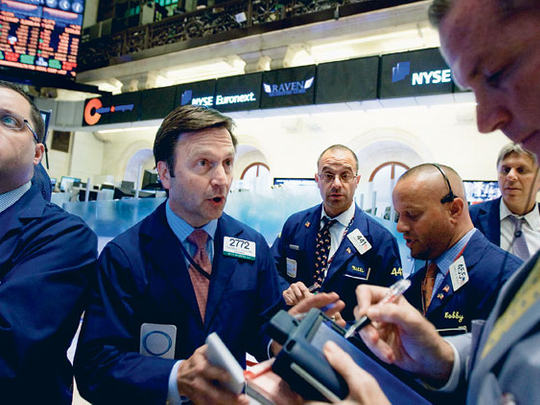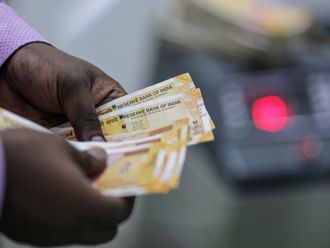
New York: US stock investors are turning more to options for protection after the latest data showing the frailty of the econ-omic recovery, but they may find some comfort in Wall Street's "fear gauge".
After a dismal July payrolls report, options investors are busy buying protective puts on a popular exchange-traded fund that tracks the S&P 500 index, but the CBOE Volatility Index suggests there is no need to be too concerned.
Protective put options in the SPDR S&P 500 fund, also known as the SPYders, were a favourite among traders after a larger-than-expected drop in July US non-farm payrolls fuelled worries that the economic recovery was faltering.
Put options are generally purchased as a protection against a market decline.
According to Trade Alert, an option analytics firm, the top five of the 10 most active contracts on Friday were put options on the SPYders.
The ETF fell 0.4 per cent to $112.41.
But the VIX fell 1.6 per cent to end at 21.74 as the market bounced much of the way back despite the jobs data and closed well off the lows of the day.
"We are at the tail end of the volatility aftershock that peaked on May 20 at just over a 45 reading in the VIX," said MKM derivatives strategist Jim Strugger.
Market psychology
"At this point in the cycle, the market psychology should be resilient."
Strugger expects volatility to decline in coming weeks, with the spot VIX sliding through 20 in late August and September to reach the 15 to 18 range.
The VIX, a yardstick of investor anxiety, is a 30-day risk forecast of stock market volatility.
The index typically has an inverse relationship with the S&P benchmark as it tracks option prices that investors are willing to pay as a protection on the underlying stocks.
All eyes are on the Federal Reserve, which may provide a fillip to an otherwise dull summer market.
Investors are leaning toward the view the Fed will resort once more to some mild quantitative easing, which may be good or bad for the market.
"Bernanke himself has suggested extending the Bush tax cuts because, as he put it, the economy is still in need of stimulus. So it's not completely out of reach that the Fed (this) week could actually implement the purchase of more mortgages or other assets. In other words, Quantitative Easing, Part 2," said Frank Gretz, market analyst at Wellington Shields & Co in New York.
"This brings up a couple of interesting possibilities... Given that the Fed's outlook is still for a moderate recovery, the market might not like that even the Fed has turned negative — the seemingly good news of more easing could instead prove bad news."
The Fed's policymaking committee is due to meet on Tuesday.
The S&P 500 found enough bids after its intraday selloff to stage a late rally and closed above its 200-day moving average of 1,115 on Friday, as it had done all week.
The benchmark's moving average convergence-divergence is still showing a strong buy signal and the benchmark's momentum is also positive.
But according to Vinny Catalano, global investment strategist with Blue Marble Research in New York, there are no clear signals of an upward or downward move and "right now we just got a short-term sideways trading range".












